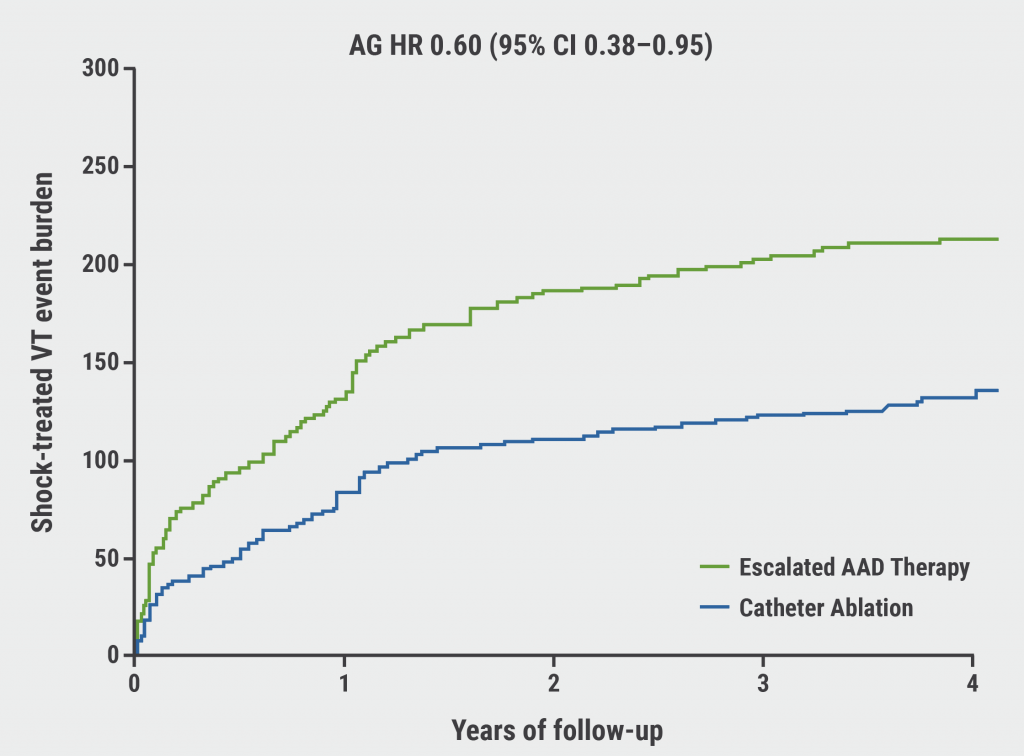https://doi.org/10.55788/36885b2f
Hypertension is a known risk factor for both clinical AF and AF-related stroke. However, it remains unclear whether continuous screening for AF can prevent strokes in individuals with high systolic BP. To address this, Dr Lucas Yixi Xing (Copenhagen University Hospital, Denmark) and colleagues conducted a post-hoc analysis of the LOOP study (NCT02036450) [1]. The previously published LOOP study included 6,004 participants ≥70 years old without AF but with ≥1 of the following stroke risk factors: hypertension, diabetes mellitus, heart failure, or previous stroke [2]. The participants were randomised to continuous monitoring with ILR and subsequent anticoagulation therapy if AF was detected (n=4,503) or standard therapy (n=1,501) to assess whether the intervention was able to prevent strokes. Although ILR screening was associated with a 3-fold increase in the detection of AF and subsequent initiation of anticoagulation therapy, no significant risk reduction in stroke or systemic arterial embolism was observed (HR 0.80; P=0.11). The current post-hoc analysis assessed the relation between AF screening and hypertension in stroke prevention [1]. In addition, the research group investigated how systolic BP affected AF occurrence and AF burden.
Participants with a higher systolic BP (≥150 mmHg) benefitted significantly more from ILR screening for AF in terms of stroke prevention than participants with a systolic BP <150 mmHg (HR 0.56 vs HR 1.16; P for interaction=0.0077; see Figure). Although systolic BP did not significantly influence the occurrence of new-onset AF in the intervention arm (HR 1.10; 95% CI 0.92‒1.33), participants with a systolic BP ≥150 mmHg displayed significantly higher rates of AF episodes that lasted ≥24 hours (HR 1.69; 95% CI 1.07‒2.66).
Figure: Interaction between systolic BP and the effect of ILR screening on stroke or systemic arterial embolism [1]

CI, confidence interval; ILR, implantable loop recorder.
“The current analysis showed that the benefit of ILR screening for AF on stroke prevention increased with increasing systolic BP. This effect may be partially explained by the finding that high systolic BP was associated with an increased risk for longer AF episodes. However, these results should be interpreted with caution since this was a post-hoc analysis, and BP measurement was only taken at a single point,” concluded Dr Xing.
- Xing LY, et al. Systolic blood pressure and effects of screening for atrial fibrillation with long-term continuous monitoring. What is new on stroke prevention, EHRA 2022, 3–5 April, Copenhagen, Denmark.
- Svendsen JH, et al. Lancet. 2021;398(10310):1507‒1516.
Copyright ©2022 Medicom Medical Publishers
Posted on
Previous Article
« Decision-support tool tied to increased outpatient management of PE Next Article
AI model accurately discriminates between arrhythmias »
« Decision-support tool tied to increased outpatient management of PE Next Article
AI model accurately discriminates between arrhythmias »
Table of Contents: EHRA 2022
Featured articles
Letter from the Editor
Diagnostics and Prevention
Cardiac magnetic resonance imaging improves prediction of post-MI sudden cardiac death
AI model accurately predicts sudden cardiac death in overall population
AI model accurately discriminates between arrhythmias
Impact of AF screening on stroke prevention influenced by systolic blood pressure
Developments in Devices
Conduction system pacing potential alternative for biventricular pacing in heart failure
Left bundle branch area pacing is a feasible technique for HF and bradyarrhythmia
Focus on the efficacy of cardiac resynchronisation therapy in HF plus concomitant AF
RESET: No survival benefit of CRT-defibrillator over CRT-pacemaker in heart failure
Insertable cardiac monitors effective for AF detection in cryptogenic stroke
Updates on Ablation
First results of the POWER FAST III trial
Real-world safety results on pulsed-field ablation with pentaspline catheter
VANISH: Ablation reduces shock burden compared with anti-arrhythmic drug in ventricular tachycardia
Low AF recurrence rates after PVI using pulsed-field ablation
Pulsed-field ablation reduces neurocardiac damage versus cryoballoon ablation
Ultrasound-guided femoral venipuncture reduces complications in catheter ablation
News on Atrial Fibrillation
Sex differences revealed in AF determinants and AF progression
Early rhythm-control therapy efficacious in men and women with AF
Progression in remote app-based monitoring of atrial fibrillation
Other Topics
Benefits of SGLT2 inhibitors may extend beyond HF-associated outcomes
© 2024 Medicom Medical Publishers. All rights reserved. Terms and Conditions | Privacy Policy
HEAD OFFICE
Laarderhoogtweg 25
1101 EB Amsterdam
The Netherlands
T: +31 85 4012 560
E: publishers@medicom-publishers.com


